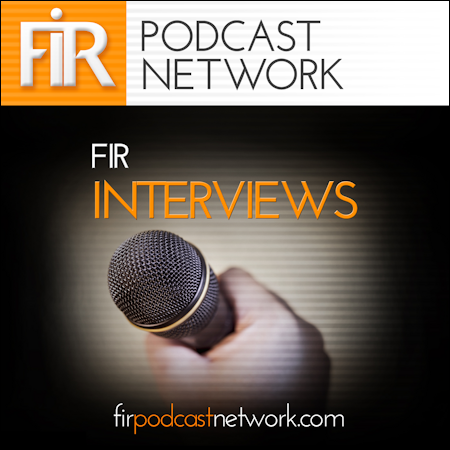 It’s doubtful that many people would disagree with the belief that our behaviours in how, where and when we consume content – the evolved way of saying what we used to describe as reading the papers, listening to the radio or watching TV – have shifted dramatically and permanently with the broad and deep penetration of technology, both hardware and software.
It’s doubtful that many people would disagree with the belief that our behaviours in how, where and when we consume content – the evolved way of saying what we used to describe as reading the papers, listening to the radio or watching TV – have shifted dramatically and permanently with the broad and deep penetration of technology, both hardware and software.
We’re exposed to research, surveys and opinions – much of it highly credible – to show us how our world of content creation and consumption is changing in ways that we could hardly believe likely at the turn of the century just over a dozen years ago.
One area that is constantly on the attention radar is largely to do with the ‘how’ of news consumption. It’s not only about the TV any more: it’s also about computers, tablets and smartphones, separately and used in conjunction with one another.
This is the so-called second-screen experience that is already evolving into three or more screens as multiple-device ownership and usage become more common with greater access to the tools, greater understanding of what you can do with them and greater quantities of content to consume and share opinion about.
The results of a global survey conducted by InSites Consulting for BBC World News and bbc.com, published yesterday, offer some credible insights into the growing impact of TV, smartphones, tablets and laptops on people’s news consumption habits in nine representative markets.
The BBC doesn’t say when the survey took place but I assume it was very recently, perhaps late in 2012 or earlier this year.
Over 3,600 owners of digital devices in Australia, Singapore, India, UAE, South Africa, Poland, Germany, France and the US were surveyed; the BBC says they were top income earners and owners of at least three devices amongst television, tablet, smartphone and laptop/desktop.
Here are a few of the key findings from the BBC’s survey (scroll down to see a visual summary in the neat infographic the BBC produced):
- Tablet owners watch more TV news, not less, with 43 percent of tablet users saying they consume more TV than they did five years ago, and most saying they use tablets alongside TV.
- Young professionals, the 25-34 year old demographic are the biggest news enthusiasts.
- Second screening for news is becoming commonplace, with users often using devices in tandem. 83 percent of tablet users say they have used their tablets while watching television.
- TV still dominates overall usage, taking 42 percent of people’s news consumption time compared with laptops (29 percent), smartphones (18 percent) and tablets (10 percent).
- News audiences expect to see advertising nearly as much on mobile (79 percent tablet, 84 percent smartphone) as they do on TV (87 percent) and online (84 percent).
- People respond to advertising across all the screens, with 1 in 7 users indicating they responded to a mobile ad in the last four weeks whilst responses to TV and desktop are 1 in 5 and 1 in 4 respectively.
Some of the other metrics the BBC published relate to breaking news and where people prefer to find it, and the type of news they prefer to watch:
[…] The survey also found that, in breaking news situations, users turn to television as their primary and first device (42%), with the majority (66%) then turning to the internet to investigate stories further. Users rated national and international news of most importance (84%, 82%), closely followed by local news (79%). Financial and business news (61%) were more highly valued than news about sports (56%) and arts/entertainment news (43%).
I’m not surprised at any of those metrics, perhaps because they broadly reflect how I see those situations and how I think many of my friends and colleagues see them.
One conclusion is worth considering, from Jim Egan, CEO of BBC Global News Ltd:
“There’s been speculation for years that mainstream uptake of smartphones, laptops and tablets will have a negative impact on television viewing, but this study has found that the four devices actually work well together, resulting in greater overall consumption rather than having a cannibalising effect.”
Points to ponder especially for advertisers and marketers.
See the survey metrics in the BBC’s infographic, below.
Related posts:













30 responses to “BBC global survey shows evolving news consumption habits across multiple screens”
BBC global survey shows evolving news consumption habits across multiple screens: It’s doubtful that many people… http://t.co/LWRc91a1Nj
BBC global survey shows evolving news consumption habits across multiple screens http://t.co/EDEPyarZee
Hobson: BBC global survey shows evolving news consumption habits across multiple screens: It’s doubtful that m… http://t.co/2JS4blLyX4
BBC global survey shows evolving news consumption habits across multiple screens: http://t.co/dPkjX1tT2T via @jangles
@alclarkeltd @jangles Great article. Reiterates the importance of TV & why brands should still see it as ‘new’ given tablet usage.
Survey reveals global news consumption habits across devices http://t.co/9URx2dZXGx and http://t.co/H1o8cDzQge via @jangles @alclarkeltd
BBC global survey shows evolving news consumption habits across multiple screens http://t.co/oFerCUJNil
BBC global survey shows evolving news consumption habits across multiple screens http://t.co/IA6otqquaA
BBC global survey shows evolving news consumption habits across multiple screens http://t.co/hDEH5GMLBp
RT @jangles: BBC global survey shows evolving news consumption habits across multiple screens http://t.co/EDEPyarZee
BBC global survey shows evolving news consumption habits across multiple screens @jangles http://t.co/PYVH9YasPz
[…] BBC global survey shows evolving news consumption habits across multiple screens. […]
RT @jangles: BBC global survey shows evolving news consumption habits across multiple screens http://t.co/EDEPyarZee
V good re changing habits> MT @jangles: BBC survey shows evolving news consumption habits across multiple screens … http://t.co/GQ8VHzawAD
BBC global survey shows evolving news consumption habits across multiple screens http://t.co/Q726S8cVX3 @jangles #comms #digital #mobile
“BBC global survey shows evolving news consumption habits across multiple screens” http://t.co/UrdEP9spbv from http://t.co/qxYIGeaFSC
RT “BBC global survey shows evolving news consumption habits across multiple screens” #journalism #news #media http://t.co/ERewr5fFvN
BBC global survey shows TV news consumption rising due to mobile. http://t.co/9dgKAwCnj3
BBC global survey shows evolving news consumption habits across multiple screens http://t.co/6B4CqyUu8c
Hi Neville. This is, I think, potentially an extraordinarily misleading piece of research.
1. It is only among high income earners, it is not representative.
2. It is claimed behaviour, there is no empirical way of justifying any of the claims.
3. The 25-34 group being the biggest news enthusiasts is highly questionable as virtually all other research (I have some experience working with news organisations) shows interest in news increasing with age.
4. They have also surveyed three countries (India, UAE and S.Africa) where the population’s age distribution differs hugely from other countries surveyed and makes comparing any age group across countries virtually meaningless.
5. Just because people expect advertising on mobile doesn’t mean they welcome it. The fact that 6 out of 7 mobile users have not responded to ads in the last month suggests how welcome it is.
6. As we know, the BBC still receives the overwhelming majority of its revenue from the TV licence in the UK. Perhaps not surprisingly, the research claims that TV is still the dominant medium fro breaking news stories. In the age of Twitter and the web, is this really credible ?
BBC global survey shows evolving news consumption habits across multiple screens: http://t.co/wAGxnE7GL6 via @jangles #Trends #Crossmedia
BBC global survey shows evolving news consumption habits across multiple screens: http://t.co/0fwVzIeyIY
BBC global survey shows evolving news consumption habits across multiple screens: http://t.co/8QJc4kk4b3 via @jangles
Opps 4 reporting “@brendanhodgson: BBC global survey shows evolving news consumption habits across multiple screens: http://t.co/nV7Kr4DaIZ”
RT @brendanhodgson: BBC global survey shows evolving news consumption habits across multiple screens: http://t.co/eV8HxDnOvX
BBC global survey shows evolving news consumption habits across multiple screens: http://t.co/LAF3XxOMOp via @jangles
RT @markbraggins: BBC global survey shows evolving news consumption habits across multiple screens: http://t.co/LAF3XxOMOp via @jangles
?????? ??? BBC: 25-34 ?? ????? ??? ??????????, 83% ??? Tablet users ??????? ????????? TV – http://t.co/USnZqahhGQ
BBC global survey shows evolving news consumption habits across multiple screens http://t.co/n487K6yYA3
[…] It's doubtful that many people would disagree with the belief that our behaviours in how, where and when we consume content – the evolved way of saying what we used to describe as reading the paper… […]